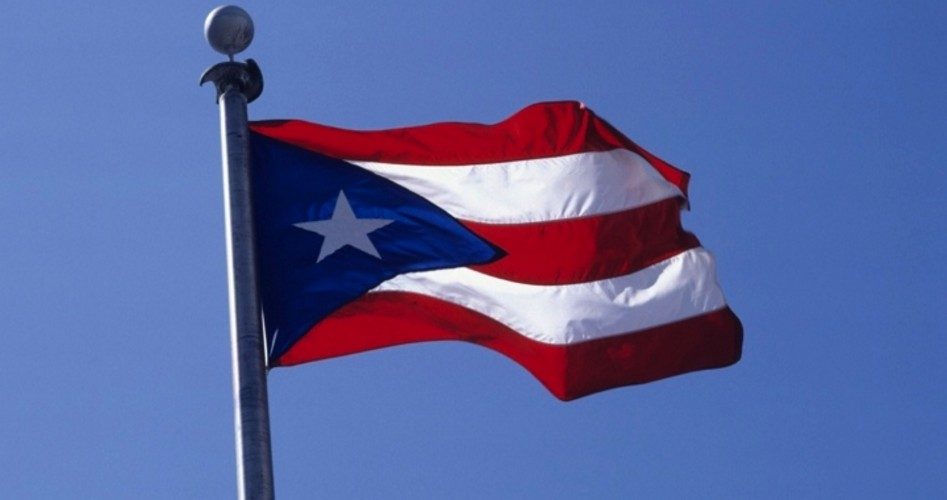
Last June Puerto Rico’s Governor, Garcia Padilla, said his government was out of money and would have to default on some of the bonds issued by various government agencies. It owed some $54 million to the Public Finance Corporation and another $140 million to the government’s Development Bank. By moving some funds around on the government’s balance sheet, Padilla was able to make most of those payments.
Since then Padilla’s financial woes have snowballed. One billion of the $73 billion borrowed by various government agencies was due and payable on Friday, January 1. Because it was a holiday, the payment is due today.
Once again, Padilla claims that he is out of money. So he has undertaken the last refuge of a borrower with no funds: He is stiffing some of his bondholders and redirecting their payments to others with stronger claims.
Today Puerto Rico has the population of Oklahoma and a GDP smaller than that of Kansas, but owes more than any state except New York or California. Its unemployment rate is twice that of the states; it’s poorer than Mississippi; two out of five residents live in poverty; and the island’s economy continues to shrink as does its population. Some are calling it a death spiral.
All three credit agencies have reduced the credit ratings of the island’s various bonds to junk status and bondholders have seen the value of their bonds in some cases drop to less than 10 percent. An analyst at Moody’s said that even with the shifting of funds from one account to another, those secured bonds will go into default: “It’s hard to say whether that happens [today] or July 1, [but] we definitely see that on the horizon,” he noted.
Here is just a partial list of the agencies whose bonds are in trouble:
The Puerto Rico Infrastructure Financing Authority;
The Public Finance Corporation;
The Highways & Transportation Authority;
The Convention Center District Authority;
The Government Development Bank;
The Public Buildings Authority;
The Employees Retirement System;
The Industrial Development Company; and
The University of Puerto Rico.
The troubles began in 2006 when certain tax breaks favorable to pharmaceutical companies and other businesses expired, causing many of them to close up shop and lay off an estimated 80,000 workers. But tax breaks for bondholders continued to allow the country to borrow, offering investors bonds with coupons paying up to eight percent, free of federal and state income tax. With the Federal Reserve driving interest rates to zero following the Great Recession, investors hungry for yield sought Puerto Rican bonds. An estimated half of all bond mutual funds in the United States have exposure to the Puerto Rican debacle.
The island’s troubles were exacerbated by the government being unwilling to face financial reality and continuing to borrow to pay for infrastructure improvements while letting government employees enjoy promises of rich retirement packages. In simple terms, the government ignored the coming tsunami, and today its first waves will hit the island.
Wall Street had its hand in the island’s economic demise as well. When a sales tax was enacted for the first time in 2006, bankers at UBS, Citigroup, and Goldman Sachs dreamed up bonds that would be serviced by those proceeds, allowing the government to continue to spend without concern. That agency, the Puerto Rico Sales Tax Financing Corporation, is known as “Cofina” while another one, financed by electric power revenues, is the Puerto Rico Electric Power Authority, or “Prepa.” Since 2000 those banks collected nearly $1 billion in fees for “managing” the country’s $126 billion in bond sales. Those fees were paid up front, of course, leaving them off the hook as the bonds now approach default.
Padilla’s predicted solutions consist of, as Bloomberg noted, “using one credit card to pay off another.” In fact at least one government agency was created for the primary purpose of financing the other agencies. The competitive tax advantage enjoyed by Puerto Rican bonds “made it easy for Puerto Rico to double its debt [load] in 10 years by selling bonds to plug [its] annual budget deficits and pay for operating expenses.”
Last Wednesday the U.S. Treasury stated that Puerto Rico’s anticipated default “demonstrates the gravity of the commonwealth’s fiscal crisis…. Puerto Rico is at a dead end, shifting funds from one creditor to pay another and diverting money from already-depleted pension funds to pay both current bills and [bond] debt service.”
As economist Herbert Stein famously said, “If something cannot go on forever, it will stop.” For Puerto Rico, that day has arrived.
A graduate of an Ivy League school and a former investment advisor, Bob is a regular contributor to The New American magazine and blogs frequently at LightFromTheRight.com, primarily on economics and politics. He can be reached at [email protected].
Related article:



